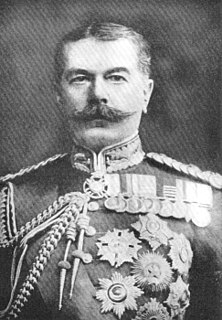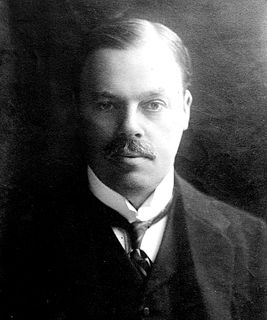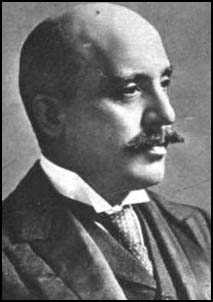
Viscount Hailsham, of Hailsham in the County of Sussex, is a title in the Peerage of the United Kingdom. It was created in 1929 for the lawyer and Conservative politician Douglas Hogg, 1st Baron Hailsham, who twice served as Lord High Chancellor of the Great Britain. He had already been created Baron Hailsham, of Hailsham in the County of Sussex, in 1928, also in the Peerage of the United Kingdom. Hogg was the son of the merchant and philanthropist Quintin Hogg, seventh son of Sir James Hogg, 1st Baronet, whose eldest son James McGarel-Hogg, 2nd Baronet was created Baron Magheramorne in the Peerage of the United Kingdom in 1887.

Earl of Powis (Powys) is a title that has been created three times. The first creation came in the Peerage of England in 1674 in favour of William Herbert, 3rd Baron Powis, a descendant of William Herbert, 1st Earl of Pembroke. In 1687, he was further honoured when he was made Marquess of Powis.

Earl of Clancarty is a title that has been created twice in the Peerage of Ireland.

Earl of Clanwilliam is a title in the Peerage of Ireland. It was created in 1776 for John Meade, 1st Viscount Clanwilliam. The Meade family descends from Sir John Meade, who represented Dublin University and County Tipperary in the Irish House of Commons and served as Attorney-General to James, Duke of York. In 1703, he was created a Baronet, of Ballintubber in the County of Cork, in the Baronetage of Ireland. His eldest son, Pierce, the second Baronet, died unmarried at an early age and was succeeded by his younger brother Richard, the third Baronet. Richard represented Kinsale in the Irish Parliament.

Earl Kitchener, of Khartoum and of Broome in the County of Kent, was a title in the Peerage of the United Kingdom. It was created in 1914 for the famous soldier Field Marshal Herbert Kitchener, 1st Viscount Kitchener of Khartoum. He had already been created Baron Kitchener of Khartoum, and of Aspall in the County of Suffolk, in 1898, Viscount Kitchener of Khartoum, and of the Vaal River in the Transvaal Colony, and of Aspall in the County of Suffolk, in 1902, and was made Baron Denton, of Denton in the County of Kent, and Viscount Broome, of Broome in the County of Kent, at the same time he was granted the earldom. These titles were also in the Peerage of the United Kingdom.

Earl Cairns is a title in the Peerage of the United Kingdom. It was created in 1878 for the prominent lawyer and Conservative politician Hugh Cairns, 1st Baron Cairns. He was Lord High Chancellor of Great Britain in 1868 and from 1874 to 1880. Cairns had already been created Baron Cairns, of Garmoyle in the County of Antrim, in 1867, and was made Viscount Garmoyle, in the County of Antrim, at the same time he was given the earldom. These titles are also in the Peerage of the United Kingdom.

Earl of Liverpool is a title that has been created twice in British history. The first time was in the Peerage of Great Britain in 1796 for Charles Jenkinson, 1st Baron Hawkesbury, a favourite of King George III. He had already been made Baron Hawkesbury, of Hawkesbury in the County of Gloucester, in 1786, and succeeded as the seventh Baronet of Walcot and Hawkesbury in 1790. His eldest son, the second Earl, served as Prime Minister of the United Kingdom from 1812 to 1827. The peerages became extinct in 1851 on the death of the latter's half-brother, the third Earl, while the baronetcy was inherited by a cousin.
Viscount Weir, of Eastwood in the County of Renfrew, is a title in the Peerage of the United Kingdom. It was created on 25 June 1938 for the Scottish businessman, public servant, politician and former President of the Air Council, William Weir, 1st Baron Weir. He had already been created Baron Weir, of Eastwood in the County of Renfrew, on 26 June 1918, also in the Peerage of the United Kingdom. As of 2010 the titles are held by his grandson, the third Viscount, who succeeded his father in 1975.

Viscount Rothermere, of Hemsted in the county of Kent, is a title in the Peerage of the United Kingdom. It was created in 1919 for the press lord Harold Harmsworth, 1st Baron Harmsworth. He had already been created a baronet, of Horsey in the County of Norfolk, on 14 July 1910, and Baron Rothermere, of Hemsted in the County of Kent, in 1914. Every holder of the titles has served as chairman of Daily Mail and General Trust plc. As of 2016 the titles are held by the first Viscount's great-grandson, the fourth Viscount, who succeeded his father in 1998.
Viscount Mills, of Kensington in the County of London, is a title in the Peerage of the United Kingdom. It was created on 22 August 1962 for the Conservative politician Percy Mills, 1st Baron Mills. He had already been created a Baronet, of Alcester in the County of Warwick, in the Baronetage of the United Kingdom on 1 July 1953, and as Baron Mills, of Studley in the County of Warwick, on 22 January 1957, also in the Peerage of the United Kingdom. As of 2017 the titles are held by his grandson, the third Viscount, who succeeded his father in 1988.

Viscount Astor, of Hever Castle in the County of Kent, is a title in the Peerage of the United Kingdom. It was created in 1917 for the financier and statesman William Waldorf Astor, 1st Baron Astor. He had already been created Baron Astor, of Hever Castle in the County of Kent, in 1916, also in the Peerage of the United Kingdom.

Viscount Cowdray, of Cowdray in the County of Sussex, is a title in the Peerage of the United Kingdom. It was created in 1917 for the industrialist Weetman Pearson, 1st Baron Cowdray, head of the Pearson conglomerate. He had already been created a Baronet, of Paddockhurst, in the Parish of Worth, in the County of Sussex, and of Airlie Gardens, in the Parish of St Mary Abbots, Kensington, in the County of London, on 26 June 1894, and Baron Cowdray, of Midhurst in the County of Sussex, in 1910. His son, the second Viscount, sat as a Liberal Member of Parliament for Eye. His son, the third Viscount, after serving in World War II where he lost an arm, was Chairman of the family firm of Pearson Plc from 1954 to 1977. The titles are held by the latter's son, the fourth Viscount, who succeeded in 1995.
Viscount Camrose, of Hackwood Park in the County of Hampshire, is a title in the Peerage of the United Kingdom. It was created on 20 January 1941 for the prominent newspaper magnate William Berry, 1st Baron Camrose. He had already been created a Baronet, of Long Cross in the County of Surrey, in the Baronetage of the United Kingdom, on 4 July 1921, and Baron Camrose, of Long Cross in the County of Surrey, on 19 June 1929, also in the Peerage of the United Kingdom. His second son, the third Viscount, disclaimed the peerages in 1995 on succeeding his elder brother. However, he had already been created a life peer as Baron Hartwell, of Peterborough Court in the City of London, on 19 January 1968. On his death in 2001 the life peerage became extinct while he was succeeded in the other titles by his eldest son, the fourth Viscount. The first three Viscounts all headed The Daily Telegraph at one point, the first having purchased it from Harry Levy-Lawson, 1st Viscount Burnham, but in the 1980s they lost control to Conrad Black.

Viscount Samuel, of Mount Carmel in Palestine and Toxteth in the City of Liverpool, is a title in the Peerage of the United Kingdom. It was created on 8 June 1937 for the Liberal politician and former High Commissioner of the British Mandate of Palestine, Herbert Samuel. His grandsons, the third and fourth Viscounts, were respectively a prominent Israeli chemist and neurobiologist, and an oil executive. As of 2014 the title is held by the 4th Viscount's son, who succeeded as fifth Viscount in that year.

Viscount Soulbury, of Soulbury in the County of Buckingham, is a title in the Peerage of the United Kingdom. It was created on 16 July 1954 for the Conservative politician Herwald Ramsbotham, 1st Baron Soulbury at the end of his term as Governor-General of Ceylon. He was son of Herwald, son of James and brother of Rev Alexander Ramsbotham. He had already been created Baron Soulbury, of Soulbury in the County of Buckingham, on 6 August 1941, also in the Peerage of the United Kingdom. He was succeeded by his elder son, James, the second Viscount, who lived most of his life in Sri Lanka and gave his maiden speech 13 December 1984. The second Viscount was succeeded by his younger brother, Peter. Better known as Sir Peter Ramsbotham, he was a distinguished diplomat and notably served as British Ambassador to the United States between 1974 and 1977. Sir Peter's son, Oliver, fourth Viscount, succeeded in 2010.
Viscount Devonport, of Wittington in the County of Buckingham, is a title in the Peerage of the United Kingdom. It was created on 22 June 1917 for the Liberal politician and former Member of Parliament for Devonport, Hudson Kearley, 1st Baron Devonport. He had already been created a Baronet, of Wittington in the Parish of Medmenham in the County of Buckingham on 22 July 1908, and Baron Devonport, of Wittington in the County of Buckingham, on 15 July 1910. As of 2017 the titles are held by his grandson, the third Viscount, who succeeded his father in 1973.
Baron Swaythling, of Swaythling in the County of Southampton, is a title in the Peerage of the United Kingdom. It was created in 1907 for the British Jewish Liberal politician, banker and philanthropist, Sir Samuel Montagu, 1st Baronet. He had already been created a Baronet, of South Stoneham House in the County of Southampton and of Kensington Palace Gardens in the County of London, in 1894. As of 2010, the titles are held by his great-great-grandson, the fifth Baron, who succeeded his father in 1998.

Baron Burnham, of Hall Barn in the Parish of Beaconsfield in the County of Buckingham, is a title in the Peerage of the United Kingdom. It was created on 31 July 1903 for the influential newspaper magnate Sir Edward Levy-Lawson, 1st Baronet, owner of The Daily Telegraph. He had already been created a Baronet, of Hall Barn in The Parish of Beaconsfield in the County of Buckingham and of Peterborough Court in the City of London, in the Baronetage of the United Kingdom on 13 October 1892. Levy-Lawson was the son of Joseph Moses Levy, who acquired The Daily Telegraph only months after its founding.

Viscount Finlay, of Nairn in the County of Nairn, was a title in the Peerage of the United Kingdom. It was created on 27 March 1919 for the lawyer and politician Robert Finlay, 1st Baron Finlay. He had already been created Baron Finlay, of Nairn in the County of Nairn, on his appointment as Lord Chancellor in 1916. He was succeeded by his only son, the second Viscount, who was a Lord Justice of Appeal. Both titles became extinct on his death in 1945.

Field Marshal Herbert Charles Onslow Plumer, 1st Viscount Plumer, was a senior British Army officer of the First World War. After commanding V Corps at the Second Battle of Ypres in April 1915, he took command of the Second Army in May 1915 and in June 1917 won an overwhelming victory over the German Army at the Battle of Messines, which started with the simultaneous explosion of a series of mines placed by the Royal Engineers' tunnelling companies beneath German lines, which created 19 large craters and was described as the loudest explosion in human history. He later served as Commander-in-Chief of the British Army of the Rhine and then as Governor of Malta before becoming High Commissioner of the British Mandate for Palestine in 1925 and retiring in 1928.












